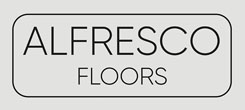
14 Jan 3 Mistakes to Avoid with Class A Decking

If you are currently involved in the design or specification of decking for external flooring systems, then you will be considering different options for Class A decking which are compliant with current building regulations.
According to current UK fire safety legislation, any specified attachment on high-rise residential buildings such as inset or bolt-on balconies, and other must specify Class A non-combustible materials.
This important regulation comes in light of recent tragedies in high rise apartments, such as Grenfell Tower. Balconies and external walls made with combustible materials are a potential source of rapid fire spread on residential buildings.
Due to this regulation, the construction sector has been looking for compliant, sustainable alternatives to timber or composite materials for use on high rise buildings.
In this blog, we will discuss some important mistakes specifiers and architects must avoid when it comes to choosing Class A decking that meets regulations but also strikes a balance between aesthetics, function, form, durability, and cost-effectiveness.

Mistake #1 11 metres or 18 metres?
Due to current UK regulations, any residential building over 18m in height must specify non-combustible decking (which means it is Class A) for all specified attachments.
In 2020, it was discussed how the height of buildings where combustible materials are banned may be dropped to 11m from the current 18m. This will set the standard in line to where it currently is in Scotland.
This speculation surrounded the November 2019 fire at a Bolton student accommodation high rise which stood at 17.8m in height and therefore unfortunately missed out on the stronger fire safety regulations. In this fire, the external walls and balconies were combustible and were suggested through investigations to be a catalyst in the spreading of the fire.
The 11m threshold may soon come into regulation as it will cover buildings above six storeys. Whether a specifier or architect, ensuring your building project is safe and compliant is so important.
Regardless, there are no real reasons (including cost and aesthetics) not to consider using the highest-rated products available, even if they are not required by regulations at the time.
You can read more about this topic in our blog: 11m or 18m: What Is The Current Guidance For Fire Regulations?

Mistake #2 Only Considering Class A1 Products
Materials such as porcelain, concrete, metal, and stone are naturally non-combustible and are deemed to give no contribution to a fire, so construction products made entirely of these materials can be classed as A1-rated without the need for further fire testing. You can read more about this here.
Other products will tested and certified as either A1 or A2. Both of these types are considered safe and are permitted on external applications on buildings of any height.
You can read which surface materials deliver Class A decking in our blog.
Mistake #3 Using Non A-rated Sub-frames
When choosing a Class A surface material, it is vital you make sure the entire decking system is compliant with fire safety and building regulations by ensuring it is completely Class A-rated.
The decking surface materials plus the joists, pedestals and accessories such as shims and spacer tabs, must also be non-combustible and meet a Class A fire rating.
This will ensure you specify a fully compliant decking system that meets fire safety and building regulations for high rise external flooring, whether a balcony, terrace or roof garden.

Conclusion: 100% Aluminium Decking and Paving Solutions
Aluminium decking is a great surface material for your high rise building’s external flooring. AR-Deck from Alfresco Floors is a 100% aluminium decking system, comprising of aluminium deckboards with a fully adjustable pedestal and joist sub-frame, and is the only system of its kind to include up to 5% slope correction.
Or if you prefer porcelain or concrete tiles to aluminium decking, AR-Pave from Alfresco Floors is a 100% aluminium paving support system comprising of adjustable pedestals, joists, spacer tabs, side stops and end stops. AR-Pave also facilitates up to 5% slope correction.



Pingback:What Are the Regulations Around Class A Decking? - Alfresco Floors
Posted at 07:48h, 22 February[…] Considerations for Specifying Class A Decking 3 Mistakes to Avoid with Class A Decking Why is Class A Decking […]
Pingback:A Complete Guide to Class A Decking - Alfresco Floors
Posted at 09:38h, 28 July[…] are the top mistakes specifiers and architects must avoid when it comes to choosing Class A decking that meets […]